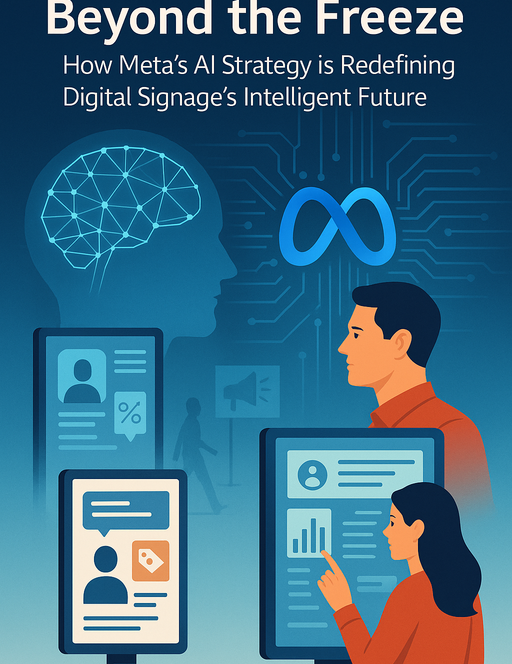In an era defined by accelerating technological advancement and profound shifts in global policy, the landscape of information and its dissemination has never been more scrutinized. While headlines might capture the intensity of governmental processes and public demand for transparency in high-profile legal matters, such as the ongoing dialogues involving Justice Department officials and figures like Ghislaine Maxwell, a parallel and equally impactful narrative unfolds within the realm of emerging technologies. The very fabric of public information is being redefined, not just by calls for data release, but by strategic national blueprints aimed at harnessing the power of Artificial Intelligence. This dual focus underscores a period of dynamic transformation, where governmental actions, whether in legal investigations or technological policy, invariably shape the future of how information is processed, presented, and perceived. Central to this technological revolution is the burgeoning field of AI, poised to profoundly redefine everything from national security to, perhaps surprisingly, the everyday screens that populate our commercial and civic spaces: digital signage.
Powering Tomorrow’s Displays: The Strategic Blueprint for AI Innovation
The strategic direction set by national leadership plays an undeniable role in accelerating technological evolution. President Trump’s “AI Action Plan,” a comprehensive blueprint designed to “sustain and enhance America’s global AI dominance,” exemplifies this top-down impetus. This ambitious strategy, underpinned by Executive Orders, aims to reduce regulatory burdens, facilitate the construction of massive AI data centers, and encourage the global export of American AI technology. Such policies are not merely abstract declarations; they lay the groundwork for practical, industry-wide transformations. For digital signage, the implications are profound. The push for vast data processing capabilities, fueled by the demand for AI data centers, provides the computational backbone necessary for highly sophisticated, intelligent displays. Furthermore, the emphasis on exporting American AI innovation means that the advanced algorithms and machine learning models developed within the U.S. will be readily available to power cutting-edge digital signage solutions worldwide, fostering a global ecosystem of intelligent screens. Even the administration’s focus on addressing “ideological bias” in AI chatbots, while seemingly specific, reflects a broader governmental awareness of the ethical complexities inherent in AI deployment—a crucial consideration as digital signage becomes more personalized and pervasive.
Beyond Static Screens: AI’s Real-World Revolution in Digital Signage
The impact of these national AI strategies on digital signage is translating into tangible, real-world applications that are rapidly moving beyond the static images of the past. AI is transforming displays into dynamic, interactive communication platforms. One of the most compelling use cases lies in audience analytics: AI-powered cameras can anonymously detect demographics, estimate mood, and track engagement, allowing content to be adjusted in real-time for maximum impact. Imagine a retail display that subtly alters promotions based on the age group or perceived interest of passersby, or a public information screen that prioritizes emergency alerts when traffic patterns suggest an imminent event. Beyond personalization, AI is optimizing content delivery itself through continuous A/B testing, predicting which visuals, messages, or even color schemes will resonate most effectively in specific contexts. Moreover, AI enables truly interactive experiences, from voice-activated kiosks providing tailored information to gesture-controlled displays in showrooms. The technology also enhances operational efficiency, leveraging predictive maintenance to identify potential hardware failures before they occur, minimizing downtime, and optimizing energy consumption across vast networks of screens. In smart city initiatives, AI-driven digital signage can integrate with urban sensors to provide real-time traffic flow information, guide pedestrians, or even manage public space utilization, transforming static billboards into responsive urban assets.
Navigating the Ethical and Regulatory Currents in AI-Driven Displays
As AI permeates digital signage, the ethical and regulatory landscape becomes increasingly complex. While President Trump’s administration emphasized accelerating AI development, there is a notable continuity with previous administrations, including former President Biden’s executive orders, in acknowledging the need to mitigate potential harms. The joint guidance published by agencies like the Department of Justice and the FTC on discrimination and harmful biases in AI applications is particularly relevant. For digital signage, this translates into critical questions surrounding data privacy and algorithmic fairness. If displays are collecting audience data, how is that data protected, anonymized, and used responsibly? How can we ensure that AI algorithms driving content personalization do not inadvertently perpetuate or amplify biases, leading to discriminatory targeting or exclusion? The public’s growing awareness and demand for transparency, echoed in the broader national conversations around data and accountability, amplify the need for robust ethical frameworks in AI-driven digital signage. Industry players are now compelled to not only innovate rapidly but also to prioritize secure data handling, transparent algorithm design, and a commitment to equitable and inclusive user experiences. Balancing technological ambition with societal responsibility is paramount to ensuring that AI-powered displays enhance, rather than compromise, public trust and individual rights.
The journey of digital signage from passive advertising to intelligent, responsive communication hubs is one of the most exciting chapters in the broader narrative of AI’s societal integration. Fuelled by national strategies designed to foster innovation and global leadership, and continuously refined by the practical demands of real-world applications, these displays are poised to reshape our interactions with public spaces. Yet, this transformation is not merely about technological prowess; it is equally about navigating the profound ethical considerations that come with pervasive AI. From ensuring data privacy to guarding against algorithmic bias, the ongoing public discourse around information governance and accountability serves as a crucial backdrop for the responsible deployment of these powerful tools. As we look ahead, the evolution of digital signage will serve as a dynamic testbed for striking the delicate balance between groundbreaking innovation and the imperative to build a future where technology truly serves humanity, fostering engagement and delivering value in an increasingly connected world.



